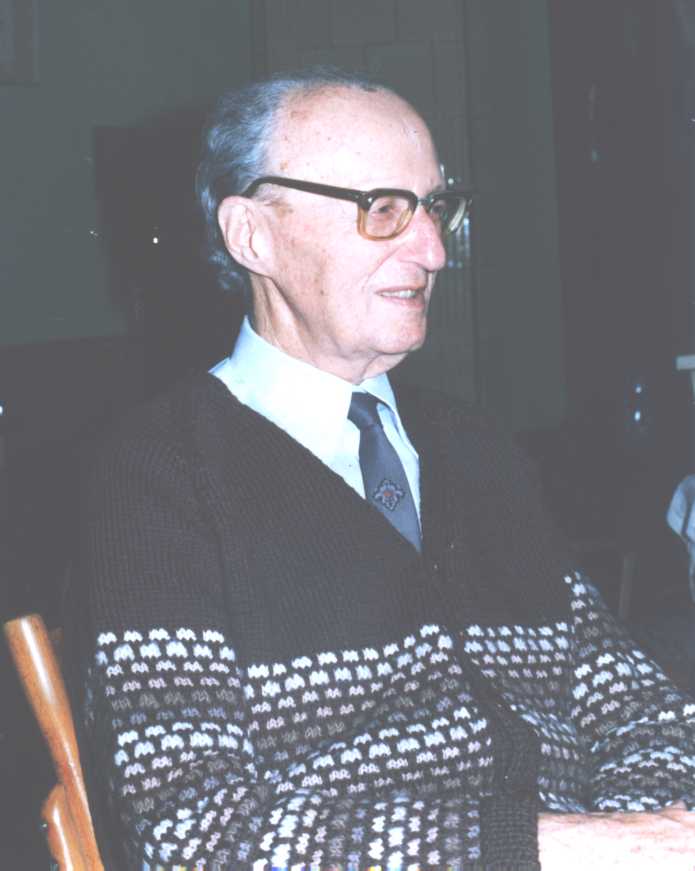Radu Grigorovici
 Professor Radu Grigorovici was born in Cernautzi, Bucovina, Romania,
20-th November, 1911. Cernautzi is a great town in Bucovina, a region
situated part in north Romania and part in Ukraine. Cernautzi
belonged for 140 years (1777-1921) to the austro-hungarian empire.
Professor Radu Grigorovici was born in Cernautzi, Bucovina, Romania,
20-th November, 1911. Cernautzi is a great town in Bucovina, a region
situated part in north Romania and part in Ukraine. Cernautzi
belonged for 140 years (1777-1921) to the austro-hungarian empire.
Professor Grigorovici studied physics and chemistry before the World
War II in the University of Cernauti (then in Romania). After finishing
his studies he became assistant of his Professor Eugen Badarau. Both moved
in 1935 to the University of Bucharest.
Professor Grigorovici got his Ph. D. in 1938, with a remarkable
thesis: "Disruptive potential in Hg vapours". As assistant professor and
associate professor at the University of Bucharest, he carried on an
extensive didactic and scientific activity for about two decades, in the
field of optics, spectroscopy and physics of gas discharges. In 1958 he
became the head of the semiconducting department in the newly created
Institute of Physics of the Academy of Romania. Between 1963-1973 he was
deputy director of this institute. Even after his retirement in 1974,
professor R. Grigorovici very actively pursues his scientific work in the
field of amorphous semiconductors.
R. Grigorovici is the author of a great number of original
scientific papers. Between 1937 and 1957 he published - in Romanian as well
as in foreign journals - a series of papers in spectroscopy, vacuum
techniques, gas discharges, physiological optics. Since 1958 he started to
work in solid state research. His first interest went to heavily disordered
thin metallic films, whose mechanisms of formation, granulation, electrical
conduction were elucidated in a series of papers published with his coworkers
between 1959 and 1964.
Thereafter, Professor Radu Grigorovici focused his interest on the
semiconducting elemental films (Ge, Si) which, deposited on cold substrates,
lack regular crystalline structure and thus were called "amorphous".
As head of a research team formed by him, R. Grigorovici developed a complex
investigation of the interconnected structural, electrical, optical and
photoconduction properties of amorphous semiconductors, first elemental thin
films, later also chalcogenide alloys. He was the first to stress the
inadequacy of describing amorphous germanium and amorphous silicium by means
of microcrystalline models. Together with his co-worker (Mrs. Rodica Manaila,
former assistant of Professor Grigorovici in the Faculty of Physics,
University of Bucharest) he gave the first "amorphous" model of a continuous
interconnected random network to describe the structure of an ideal amorphous
material. Today such models are unanimously accepted. He was also the first
to observe the discrepancy between the optical and electrical band gap-widths
in amorphous germanium and to explain it by means of introducing the
"conductivity edges" of the valence and conduction bands, as limits between
localized and extended electronic states. Later, these limits got a large
popularity under the name of "mobility edges".
Beside his vast scientific and humanistic culture, and his never
exhausted interest in original research, professor Grigorovici's genuinely
sociable character helped gathering around him competent leadership. A great
number of Ph. D. titles were obtained under is competent leadership.
Professor Grigorovici is member of the Romanian Academy of Sciences.
He was for many years Vice-President of the Romanian Academy.
In recognition for his fruitful, high quality scientific work,
professor Grigorovici has been elected member of the Editorial Boards of
several well-known international journals: Journal of Non-Crystalline Solids,
Thin Solid Films, physica status solidi, Journal of Optoelectronics and
Advanced Materials. For his contribution to the development of physics he was
awarded high orders and medals of Romania.
The last year activity of Professor Grigorovici was devoted to the
history of Bucovina, his land of origin, especially to the epoch when this old
romanian land was under the leadership of Franz Joseph I emperor.
Nevertheless the great Professor is still involved in physics,
"son premier amour". The last paper co-authored by Prof. Grigorovici,
"Self-organization in amorphous silicon", was published in the book "Physics
and Applications of Disordered Materials" (INOE Publ. House) in 2002.
Now we celebrate the 92-nd anniversary of Professor Radu Grigorovici.
We all wish to the great professor and friend Radu Grigorovici
Mihai A. POPESCU

